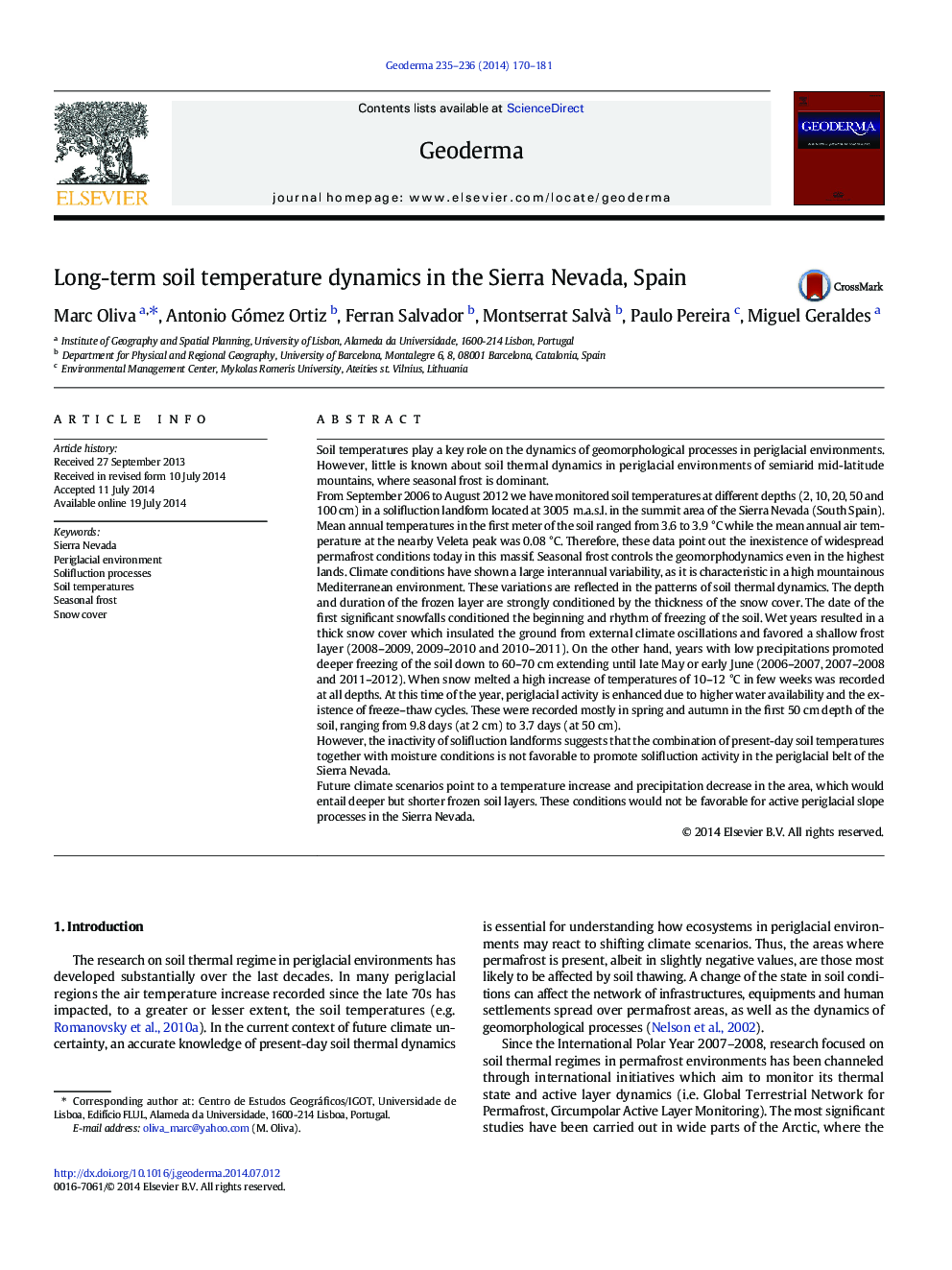| کد مقاله | کد نشریه | سال انتشار | مقاله انگلیسی | نسخه تمام متن |
|---|---|---|---|---|
| 4573316 | 1629468 | 2014 | 12 صفحه PDF | دانلود رایگان |
• We analyze soil temperatures in a solifluction lobe in Sierra Nevada from 2006-2012
• Data reveal no permafrost regime, with seasonal frost conditions at 3000 m
• Large interannual variability in soil and air temperatures
• Thickness and duration of snow cover condition the depth and calendar of soil frost
• Future climate scenarios may trigger deeper but shorter lasting frozen soil layers
Soil temperatures play a key role on the dynamics of geomorphological processes in periglacial environments. However, little is known about soil thermal dynamics in periglacial environments of semiarid mid-latitude mountains, where seasonal frost is dominant.From September 2006 to August 2012 we have monitored soil temperatures at different depths (2, 10, 20, 50 and 100 cm) in a solifluction landform located at 3005 m.a.s.l. in the summit area of the Sierra Nevada (South Spain). Mean annual temperatures in the first meter of the soil ranged from 3.6 to 3.9 °C while the mean annual air temperature at the nearby Veleta peak was 0.08 °C. Therefore, these data point out the inexistence of widespread permafrost conditions today in this massif. Seasonal frost controls the geomorphodynamics even in the highest lands. Climate conditions have shown a large interannual variability, as it is characteristic in a high mountainous Mediterranean environment. These variations are reflected in the patterns of soil thermal dynamics. The depth and duration of the frozen layer are strongly conditioned by the thickness of the snow cover. The date of the first significant snowfalls conditioned the beginning and rhythm of freezing of the soil. Wet years resulted in a thick snow cover which insulated the ground from external climate oscillations and favored a shallow frost layer (2008–2009, 2009–2010 and 2010–2011). On the other hand, years with low precipitations promoted deeper freezing of the soil down to 60–70 cm extending until late May or early June (2006–2007, 2007–2008 and 2011–2012). When snow melted a high increase of temperatures of 10–12 °C in few weeks was recorded at all depths. At this time of the year, periglacial activity is enhanced due to higher water availability and the existence of freeze–thaw cycles. These were recorded mostly in spring and autumn in the first 50 cm depth of the soil, ranging from 9.8 days (at 2 cm) to 3.7 days (at 50 cm).However, the inactivity of solifluction landforms suggests that the combination of present-day soil temperatures together with moisture conditions is not favorable to promote solifluction activity in the periglacial belt of the Sierra Nevada.Future climate scenarios point to a temperature increase and precipitation decrease in the area, which would entail deeper but shorter frozen soil layers. These conditions would not be favorable for active periglacial slope processes in the Sierra Nevada.
Journal: Geoderma - Volumes 235–236, December 2014, Pages 170–181
